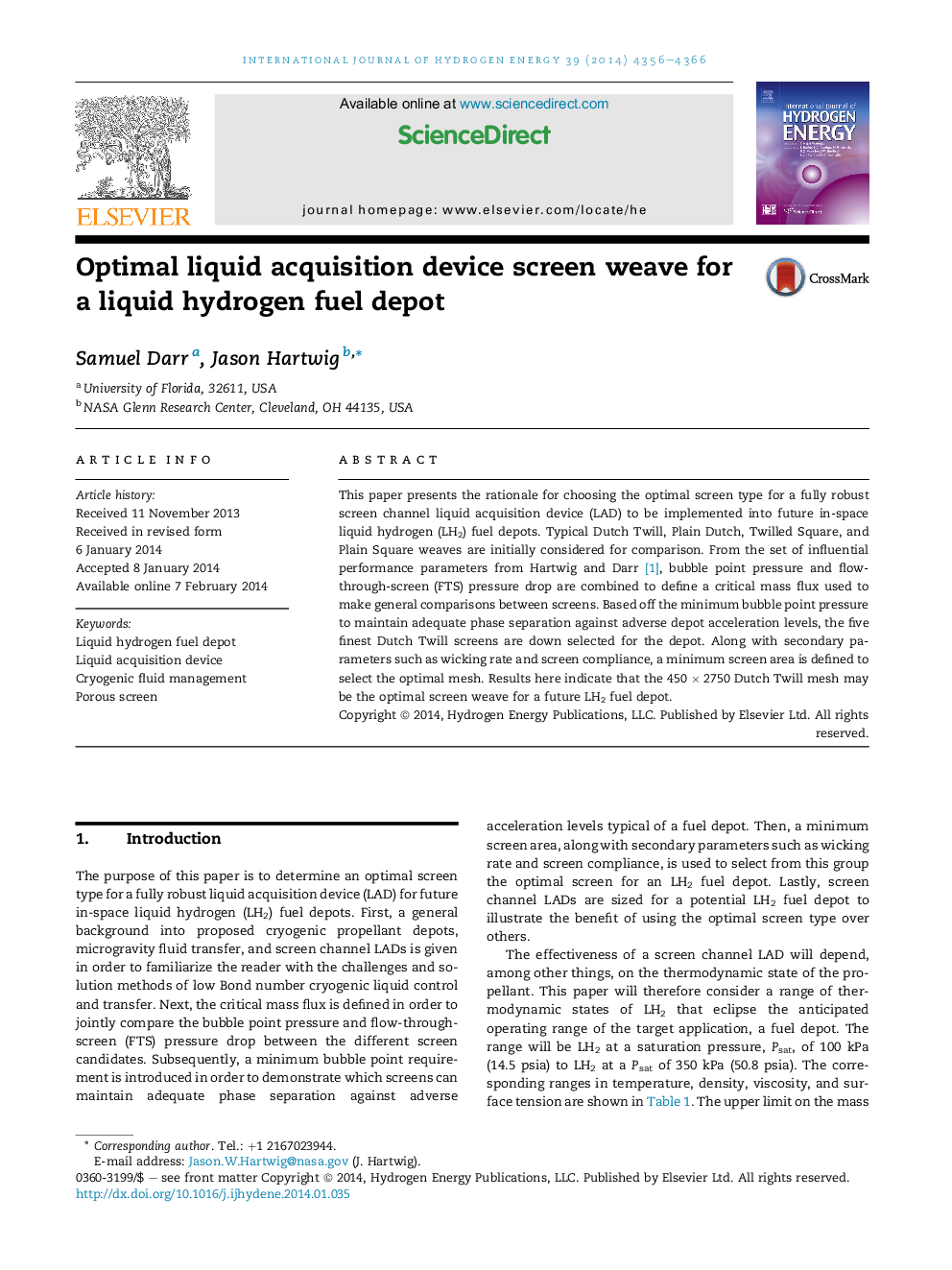| Article ID | Journal | Published Year | Pages | File Type |
|---|---|---|---|---|
| 1270524 | International Journal of Hydrogen Energy | 2014 | 11 Pages |
•The cryogenic liquid hydrogen fuel depot is introduced.•Logic is presented for choosing a liquid acquisition device for LH2 propellant.•ΔPBP, ΔPFTS, and vehicle acceleration are the primary design factors.•A critical mass flux, minimum bubble point, and minimum screen area are derived.•The optimal LAD screen is down-selected and the system is sized for an LH2 depot.
This paper presents the rationale for choosing the optimal screen type for a fully robust screen channel liquid acquisition device (LAD) to be implemented into future in-space liquid hydrogen (LH2) fuel depots. Typical Dutch Twill, Plain Dutch, Twilled Square, and Plain Square weaves are initially considered for comparison. From the set of influential performance parameters from Hartwig and Darr [1], bubble point pressure and flow-through-screen (FTS) pressure drop are combined to define a critical mass flux used to make general comparisons between screens. Based off the minimum bubble point pressure to maintain adequate phase separation against adverse depot acceleration levels, the five finest Dutch Twill screens are down selected for the depot. Along with secondary parameters such as wicking rate and screen compliance, a minimum screen area is defined to select the optimal mesh. Results here indicate that the 450 × 2750 Dutch Twill mesh may be the optimal screen weave for a future LH2 fuel depot.
